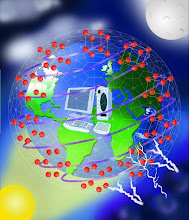The remote sensing satellite weighs 1,380 kilograms (3,042 lb) at launch and 675 kilograms (1,488 lb) at lunar orbit and carries high resolution remote sensing equipment for visible, near infrared, soft and hard X-ray frequencies. Over a two-year period, it is intended to survey the lunar surface to produce a complete map of its chemical characteristics and 3-dimensional topography. The polar regions are of special interest, as they might contain ice. Also included in the mission, are the five ISRO payloads and six payloads from other international space agencies including NASA, ESA, and the Bulgarian Aerospace Agency, which are being carried free of cost.
Objectives
The stated scientific objectives of the mission are:[11]
- To design, develop and launch and orbit a spacecraft around the Moon using Indian made launch vehicle.
- Conduct scientific experiments using instruments on-board the spacecraft which will yield the following results:
- To prepare a three-dimensional atlas (with high spatial and altitude resolution of 5-10 m) of both near and far side of the moon.
- To conduct chemical and mineralogical mapping of the entire lunar surface for distribution of mineral and chemical elements such as Magnesium, Aluminum, Silicon, Calcium, Iron and Titanium as well as high atomic number elements such as Radon, Uranium & Thorium with high spatial resolution.
- To impact a sub-satellite ( Moon Impact Probe -MIP ) on the surface on the Moon as a fore-runner to future soft landing missions
Specifications
Specific areas of study
- High-resolution mineralogical and chemical imaging of permanently shadowed north and south polar regions.
- Search for surface or sub-surface water-ice on the Moon, specially at lunar poles.
- Identification of chemical end members of lunar high land rocks.
- Chemical stratigraphy of lunar crust by remote sensing of central upland of large lunar craters, South Pole Aitken Region (SPAR) etc., where interior material may be expected.
- To map the height variation of the lunar surface features along the satellite track.
- Observation of X-ray spectrum greater than 10 keV and stereographic coverage of most of the Moon's surface with 5m resolution
- To provide new insights in understanding the Moon's origin and evolution.
Payloads
The scientific payload has a total mass of 90 kg and contains five Indian instruments and six foreign instruments




An exceptional piece of achievement we can say! I am eagerly waiting for it's return from moon, to know what new things we can. Also, there is a high chance that we can finally know whether the moon landing of the US (JFK's Mission) was a real one or a mere conspiracy.
ReplyDeleteGood blog, keep it up. Do check my earlier blogger address, http://www.ameyawaghmare.blogspot.com . You will find a few good features their in the sidebars.